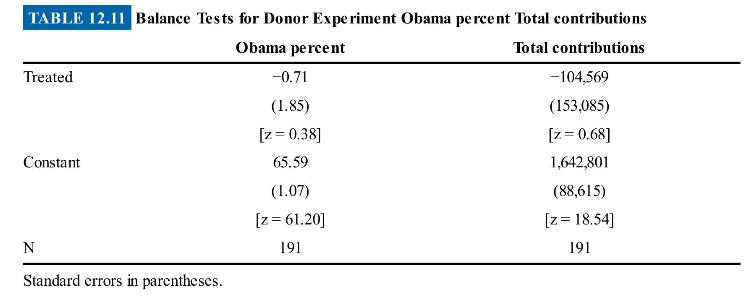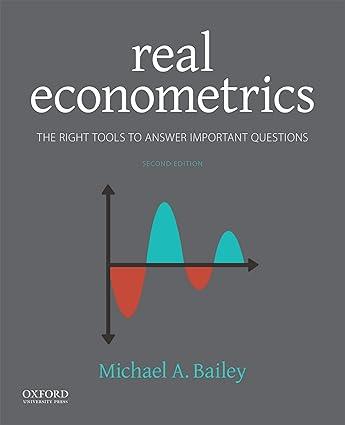Are members of Congress more likely to meet with donors than with mere constituents? To answer this
Question:
Are members of Congress more likely to meet with donors than with mere constituents? To answer this question, Kalla and Broockman (2015) conducted a field experiment in which they had political activists attempt to schedule meetings with 191 congressional offices regarding efforts to ban a potentially harmful chemical. The messages the activists sent out were randomized. Some messages described the people requesting the meeting as "local constituents," and others described the people requesting the meeting as "local campaign donors." Table 12.10 describes two key variables from the experiment.

(a) Before we analyze the experimental data, let's suppose we were to conduct an observational study of access based on a sample of Americans and ran a regression in which the dependent variable indicates having met with a member of Congress and the independent variable was whether the individual donated money to a member of Congress. Would there be concerns about endogeneity? If so, why?
(b) Use a probit model to estimate the effect of the donor treatment condition on probability of meeting with a member of Congress. Interpret the results.
(c) What factors are missing from the model? What does this omission mean for our results?
(d) Use an LPM to make your estimate. Interpret the results. Assess the correlation of the fitted values from the probit model and LPM.
(e) Use an LPM to assess the probability of meeting with a senior staffer (defined as staffrank \(>2\) ).
(g) Table 12.11 shows results for balance tests for two variables: Obama vote share in the congressional district and the overall campaign contributions received by the member of Congress contacted. Discuss the implication of these results for balance.

Step by Step Answer:

Real Econometrics The Right Tools To Answer Important Questions
ISBN: 9780190857462
2nd Edition
Authors: Michael Bailey





